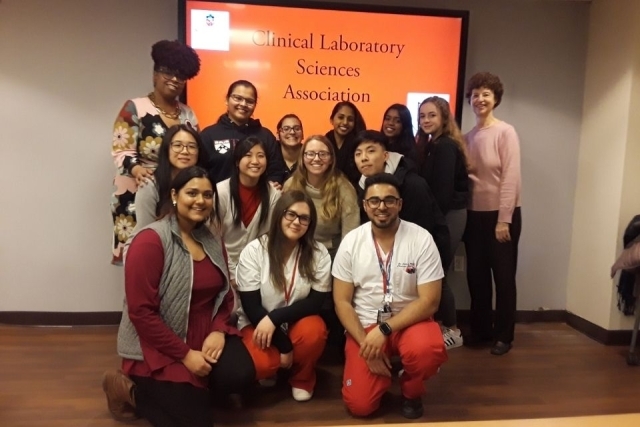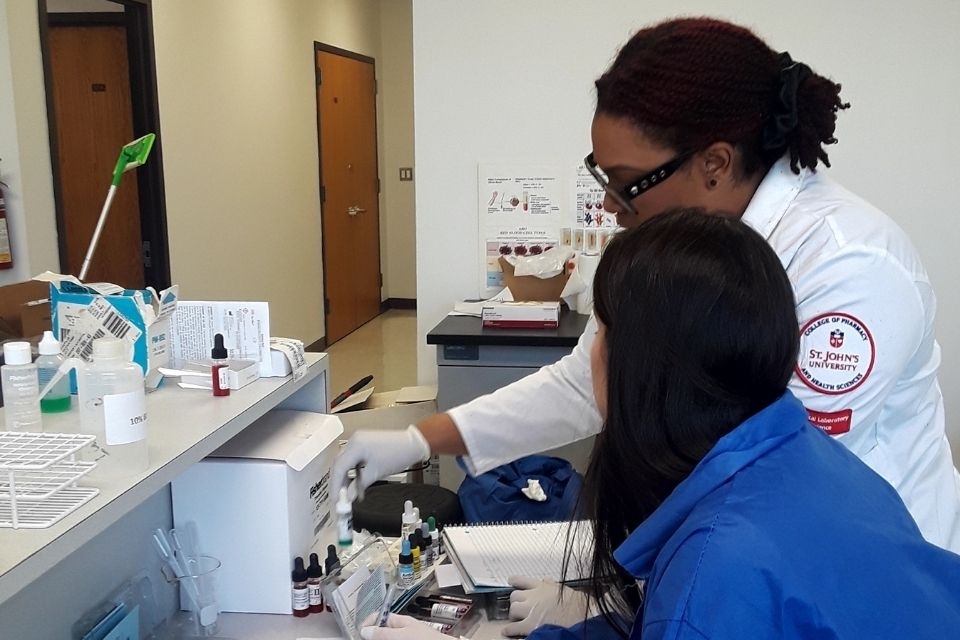
This year marks the 50th anniversary of the Clinical Laboratory Sciences (CLS) program in the College of Pharmacy and Health Sciences at St. John’s University.
Clinical laboratory scientists assist physicians by detecting the presence or absence of disease through the performance of laboratory analyses. They provide the data that help physicians determine the best treatment for patients.
According to Lisa Hochstein, Program Director, Associate Professor, and Industry Professional, most people do not realize there is a critical shortage of clinical laboratory personnel. “That’s basically because people don’t know about this profession,” she said.
Prof. Hochstein is concerned that high school guidance counselors forget to include clinical laboratory science when discussing other health care professions. “If you’ve had blood drawn and sent to a lab, these are the people who analyze it and send the results back to your doctor,” she noted.
The COVID-19 pandemic has caused the profession to receive more attention. “When they started talking about diagnostic tests, rapid tests, antibody tests, that’s what we do,” she observed. “It got us some notoriety, and here at St. John’s we probably had more students apply than in years past.”
Prof. Hochstein noted that many of her former and current students had family members go through the program, which can accommodate approximately 15–18 students each year. There is little flexibility due to limited laboratory space and slots at partner institutions, such as hospitals, for students to do their clinical laboratory rotations. Often, these sites end up hiring students.
Prof. Hochstein said that institutions with clinical laboratory science programs are either “two plus two” or “three plus one” programs. Two plus two programs teach clinical subjects in the junior and senior year in the fall; in the spring, students embark on their rotations. St. John’s is a three plus one school, which means the entire senior year is the clinical year. Students attend lectures on Monday and Tuesday and do their rotations during the remainder of the week.
“My thought is that if you learn the didactic material right away, you remember it,” she stressed.
Students also have to take a national certification exam in their senior year. Prof. Hochstein believes the way St. John’s teaches its CLS students allows the material to remain fresh in their minds.
The CLS program immediately went virtual during the pandemic. Hospital administrators told Prof. Hochstein that students could no longer work on the premises, forcing them to miss the last eight weeks of their rotations. In order to qualify for their license, students need to complete 720 rotation hours. Most students had already attained that number, but they still needed to be tested in their subject areas. Happily, all of the students passed and received their certifications.
Jasjit Kaur Multani ’12P, M.P.H., M.L.S.(ASCP)CM, and Khushpreet Kaur ’21P are cousins and graduates of the program. Ms. Kaur was inspired by her cousin to enroll.
“After moving to the US in 2015, I wanted to pursue higher education in a health profession with an emphasis on analytical work,” Ms. Kaur said.
“There is a high demand for graduates entering the field and broad possibilities for graduate studies.”

Ms. Kaur added she knew little about the profession before deciding to pursue it. “Since automation is becoming more prevalent in all aspects of clinical laboratories, being a part of a technologically savvy generation was a plus for me. The high demand for CLS graduates in health care, the ability to continue my education, and my cousin’s work experience inspired me to pursue a career in this field.”
Ms. Multani knew she wanted to pursue a health-care profession when she entered college. “The professional nature of the CLS program is so appealing to me, and I knew job prospects after graduation would be high,” she stressed.
Both agreed that the clinical rotations were their favorite aspects of the program. “The clinical rotations were rewarding,” Ms. Multani recalled. “They allowed me to apply the clinical knowledge learned in the classroom in a professional environment,” she said.
Ms. Kaur added that despite the challenges of the pandemic, it was an intensely gratifying experience. “Regardless of the circumstances, my interest deepened during senior year clinical rotations in various laboratory settings, including at a blood bank, in hematology, and in microbiology. I remember theory by doing it practically and am more focused on hands-on work.”
